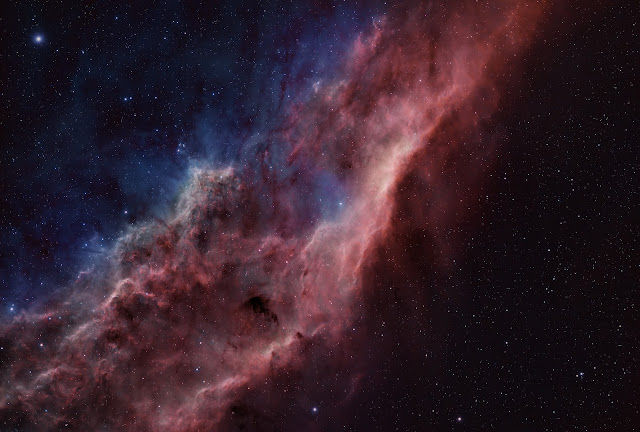I was just checking on the blog stats to see where people are looking at my blog from.
I dont know if you are frequent visitors to my antics or just passing through. Please feel free to say hi and let me know where you are from. Make comments on what you like & don't like. If you have a link to your own webpage I would be happy to share a link back to you too. It would be nice to post a page with all your own pages, blogs, facebook links to your pics. Lets just hope we all get a few more clear night skies very soon.
Malc. AKA astrogeek.
Saturday 24 May 2014
M13
A test of the set up was required. So I rebalanced and ran PHD of a target much lower in declination than M106. I wanted something bright and easy so M13 was an easy choice to make rising nicely in the North east. I ran the guide programme for 5 minutes with no issues. Fingers were crossed and I ran 5 x 20 minute exposures as a test run really. Calibrated in Maxim DL and processed in photoshop. All I done to process was levels and curves. No unsharp masks or colour correction. Very pleased the core of the structure was not overcooked. A close inspection of the image had shown a faint galaxy between M13 and NGC6207. Carte Du Ceil shows it to be a PGC (principle galaxy catalogue) designation PGC2085277 a mag16.15 galaxy some 2500 times further away than the galactic cluster M13. Delving deeper I found 31 in total as deep as 19.22. Some showing as a marginal brigtening of a pixel or 2 but still there. call up a 2 degree FOV in Carte du Ceil and see how many you can capture too. You may have to download a few extra catalogues though.
The dogs go hunting.
As mentioned in the previous post this was the first time in a month the kit had been powered up. A fellow Breckland AS member has emailed an alert stating a new type II supernova has been discovered near the core of the barred spiral galaxy M106 in Canes Venatici (the hunting dogs). A quick set up and focus gave me the scope pointing near verticle. PHD had it's guide star and ran its set up. A few minutes later everything was ready to go. I programmed my usual 20 minute exposures and left it to it. I returned after the first image to find everything had gone haywire. PHD had lost its star nearly 15 minutes earlier. I spent the next hour running tests and shorter subs not to capture anything worth keeping. All I could manage was 3 x 3 minute exposures. Even these show elongated stars. Very annoyed.
It appears that a star 23.5 million light years away a rare red supergiant star ended it's life in the most violent way. Nuclear fusion burns in it's core creating heavier elements. Fusion stops at the production of iron from Silicon. With no more energy being created to continue cooking the elements, Gravity takes over, collapsing the star and the resulting shockwave tears the star apart. Barely visible here the nova is situated just to the left of the bright core.
The only that redeems itself is the capture of a few NGC's. NGC 4248 just below M106. below him the pair NGC 4231 & NGC 4232 Bottom left is NGC 4217 & lower right NGC 4220.
It appears that a star 23.5 million light years away a rare red supergiant star ended it's life in the most violent way. Nuclear fusion burns in it's core creating heavier elements. Fusion stops at the production of iron from Silicon. With no more energy being created to continue cooking the elements, Gravity takes over, collapsing the star and the resulting shockwave tears the star apart. Barely visible here the nova is situated just to the left of the bright core.
The only that redeems itself is the capture of a few NGC's. NGC 4248 just below M106. below him the pair NGC 4231 & NGC 4232 Bottom left is NGC 4217 & lower right NGC 4220.
Camelopardalids
Apologies for the lack of posts. Me, like the rest of the UK has suffered for a month now with the dreaded cloudouts. However excitement and tension across the astronomical world had reached a pinnacle last night with a new meteor shower called the Camelopardalids. We knew the peak would hit about 3:00am BST. I had the kit set up and ready. My ageing Canon 40D with an 18mm lens at Iso1600 is a proven success for me in the past. I set the alarm for 2:50 and got up to see once again full cloud and rain. To be expected I suppose. As I gently lay my head on the pillow and began to dream again, the flashes of a thousand meteors lit up my eyelids and I slept again till dawn. Upon checking websites this morning it appears the shower inside my dream was the best we could had hoped for...
Subscribe to:
Posts (Atom)
California Nebula
NGC1499 The California Nebula. Discovered in 1889 The California Nebula is an emission nebula in the constellation of Perseus, currently v...

-
Object: M45Type: Open Cluster Distance: 380Light Years (Approx) Constellation: Taurus Date : 27th October 08 Equipment: William Optics M...
-
Without doubt the finest of globular clusters visible in the northern hemisphere. Located outside the plane of our galaxy and some 25,000 li...



